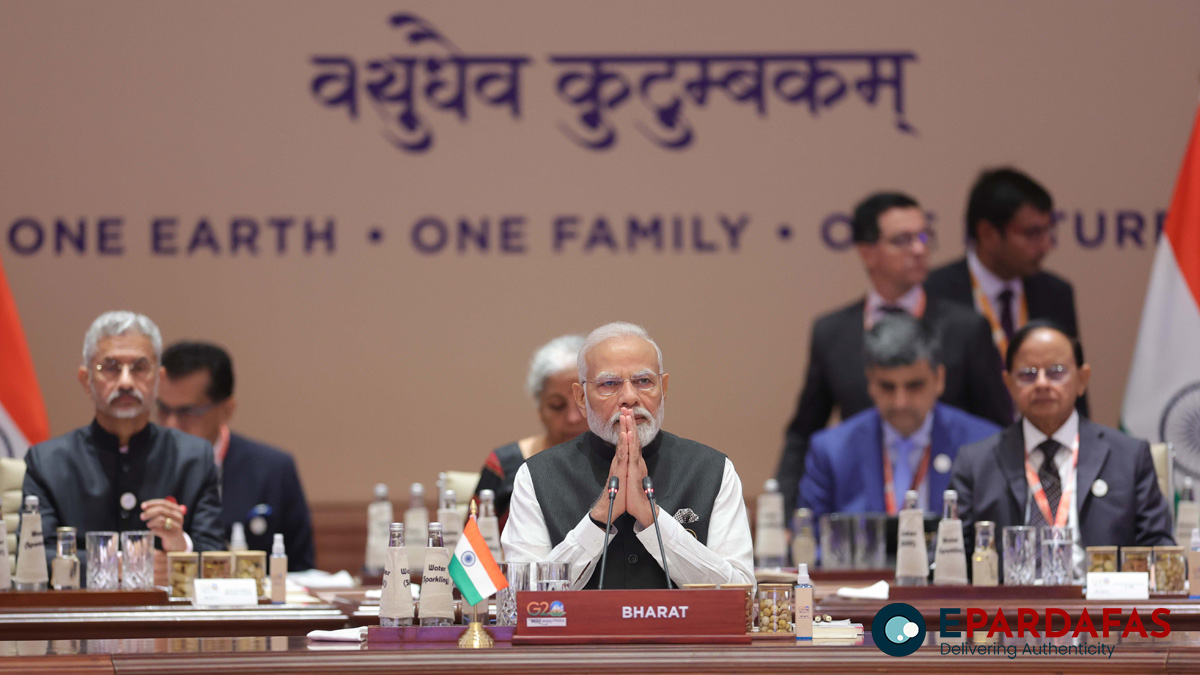
IMEC – A Transformative Multilateral Initiative Reshaping Geopolitics and Connectivity
The announcement of the India-Middle East-Europe economic corridor (IMEC) during the 20th G-20 summit in New Delhi has sent shockwaves through the world of geopolitics and international connectivity. This ambitious project, designed to link India, Saudi Arabia, the United Arab Emirates, Jordan, Israel, and the European Union through a network of shipping ports and rail routes, not only holds the promise of economic prosperity but also challenges the Chinese Belt and Road Initiative (BRI) on multiple fronts, according to experts.

Plurilateralism Versus Unilateralism: IMEC is characterized by plurilateralism, a stark departure from China’s unilateral or bilateral approach to connectivity in the BRI. The implications of this difference are profound, influencing financial, development, policy, and security issues. Experts have voiced concerns over the lack of transparency and Chinese control within the BRI, a contrast to IMEC’s emphasis on multiple stakeholders and diverse funding sources.
Multilateral Connectivity – A Global Trend: In the current landscape of global connectivity, multilateral projects are gaining prominence. The G7 Summit in 2021 witnessed leaders from Canada, France, Germany, Italy, Japan, the U.K., and the United States announcing the ‘Build Back Better World’ (B3W) initiative, which focuses on values-driven, high-standard, and transparent infrastructure partnerships.
China’s BRI, on the other hand, has faced its share of troubles, with 14 percent of its projects encountering issues in terms of number, and 32 percent in terms of value. Dr. Kaush Arha, a senior fellow at the Atlantic Council and the Center for Technology and Diplomacy at Purdue, noted that China’s investments often lead to debt traps in impoverished economies, a contrast to IMEC’s engagement with thriving economies from the outset. Indian Prime Minister Narendra Modi has described IMEC as “a beacon of cooperation, innovation, and shared progress,” while U.S. President Joe Biden considers it a game-changing investment.
Diverging Paths: Joseph Kéchichian, a senior fellow at the King Faisal Center for Research and Islamic Studies in Riyadh, Saudi Arabia, emphasized that the emergence of IMEC does not spell the end of the Chinese BRI but rather necessitates the consideration of non-Chinese interests in new connectivity initiatives. Unlike the BRI, IMEC enjoys support from key European nations like Italy and is characterized by collegiality. India’s differences with China and its non-participation in the BRI further underscore the contrasting approaches.
A Growing Anti-BRI Sentiment: Italian Prime Minister Giorgia Meloni’s announcement of Italy’s exit from the BRI during the recent G20 summit highlights the growing anti-BRI sentiment among countries participating in IMEC. Despite China’s presence along the IMEC route, Harsh Pant, Vice President of Studies and Foreign Policy at the Observer Research Foundation, cautions against viewing IMEC as a direct competitor to the BRI. While the BRI is already operational, IMEC is still a work in progress. However, IMEC does offer a more efficient and reliable alternative for nations concerned about Chinese monopolization of connectivity routes.
Role of the United States: The United States is playing a pivotal role in IMEC’s development, focusing on investment and facilitating leadership through connectivity. The Abraham Accord, mediated by the United States and signed in September 2020 between the UAE, Bahrain, and Israel, marked the first Arab-Israel peace deal in 26 years. The subsequent creation of the Middle East QUAD in October 2021 further bolstered regional stability. Dr. Arha pointed out that India has an advantage as it already has operational segments of the corridor, and in areas where development is required, Saudi Arabia possesses the necessary resources.
Economic and Geopolitical Significance: Once fully operational, IMEC is expected to serve as a cost-effective and efficient bridge between the Indian Ocean and the Mediterranean. It will include rail links, electricity cables, hydrogen pipelines, and high-speed data cables. IMEC will facilitate economic diversification for Gulf countries, foster political and social connectivity for Israel, and provide Europe with access to the Indo-Pacific market.
Aparna Pande, research fellow and director of the Initiative on the Future of India and South Asia at the Hudson Institute, described IMEC as a welcome initiative to integrate regions with historical trade connections. It will enable stronger economic linkages among South Asia, the Middle East, and Europe.
The Digital Corridor: The digital aspect of IMEC is equally significant. Dr. Arha highlighted the proposed “Blue-Raman Cable system,” an intercontinental, submarine fiber-optic communications cable connecting France to India via Italy, Greece, Israel, Jordan, Saudi Arabia, Djibouti, and Oman. Google’s investment in this submarine system reflects the growing importance of digital connectivity.
Reshaping Geopolitics: The emerging geopolitical equation between the Arab world and Israel through the Abrahamic Accord and the Middle East QUAD has opened up new opportunities with IMEC. This project, in turn, is expected to trigger further geopolitical transformations. The Gulf Rail corridor, in particular, is anticipated to cut trade times between India and Europe by 40 percent.
Mr. Pant characterized IMEC as transformative, noting its potential to address geopolitical challenges in the Middle East and North Africa (MENA) region and foster economic diversification in Saudi Arabia, particularly in clean energy. Dr. Arha likened it to Dubai becoming the “Singapore” of the Middle East.
Preserving Identities and Historical Links: IMEC also holds the potential to preserve identities and historical linkages, offering international cooperation and consensus on historical chronologies, calendars, and shared cultural understanding. It can promote social capital and meaningful employment opportunities while tapping into Africa’s untapped resources and indigenous wisdom.
Conclusion: IMEC, in its early stages, represents a pivotal development in global connectivity, transcending geopolitical boundaries and challenging the status quo. Over the next five years, as IMEC continues to take shape, its potential as a cost-effective trade network and a bridge between regions with historical ties will become increasingly evident. Its success hinges on cooperation, innovation, and the diverse opportunities it brings to a rapidly changing world.
*Input from Various News Outlets and Agency
















Comments